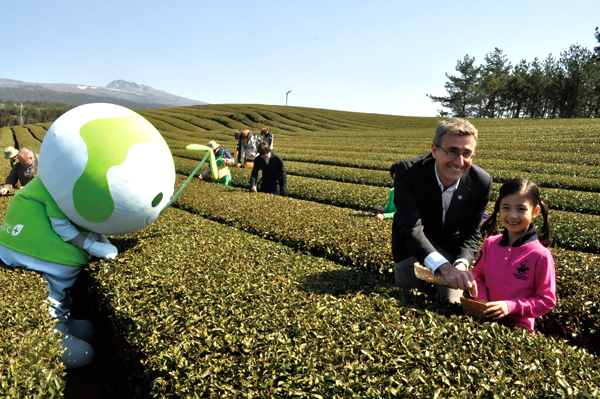When you are a famous actress who appears on TV, Broadway and the silver screen, having a fresh face is important.
That’s why Cynthia Nixon, star of Sex and the City and its two sequel blockbuster movies, was surprised when acne-like spots began appearing on her face in her early 40s.
She chalked it up to adult acne, but when she visited a dermatologist about a suspicious mole, she learned she had rosacea, a chronic vascular condition caused by inflammation.
“I assumed it was acne; I used to have it,” said Nixon, who recently starred in the Broadway play Wit, and can be seen on Showtime’s The Big C. “I was using facials and harsh astringents, and that was harming my skin even more.”
Nixon, 46, who has three kids and is a breast cancer survivor, found stress was a big trigger for rosacea – more specifically when she was stressing out about her skin. Other triggers for Nixon: wine and drastic changes in temperature, like taking a hot bath.
“Once I went to the doctor and got a little medicine and a little advice, I was on the right path,” Nixon said. “I was struggling for years. I could have saved myself a decade of scrubbing."
Nixon has teamed up with the National Rosacea Society (NRS) and Galderma Laboratories to raise awareness about the skin condition. The public service campaign can be found at rosaceafacts.com, along with a quiz to determine if you have it, and suggestions for dermatologists who can help treat it.
According to the NRS, rosacea affects more than 16 million Americans – and 78 percent of Americans don’t know they have it – or how to recognize it.
“It’s important to spread awareness because in addition to the physical symptoms, rosacea can cause anxiety, self-consciousness and embarrassment among sufferers,” said Sam Huff, executive director of NRS, in a news release.
Other rosacea symptoms include facial redness, eye irritation, thickened skin and permanent visible blood vessels, and common triggers include sun exposure, exercise and spicy foods.
Experts aren’t exactly sure why some people get rosacea, but inflammatory response and facial vessels may play an important role, according to the NRS. Rosacea typically occurs between the ages of 30 and 50, and while there is no cure, topical medications, laser treatments and systemic therapy can keep the condition under control.
That’s why Cynthia Nixon, star of Sex and the City and its two sequel blockbuster movies, was surprised when acne-like spots began appearing on her face in her early 40s.
She chalked it up to adult acne, but when she visited a dermatologist about a suspicious mole, she learned she had rosacea, a chronic vascular condition caused by inflammation.
“I assumed it was acne; I used to have it,” said Nixon, who recently starred in the Broadway play Wit, and can be seen on Showtime’s The Big C. “I was using facials and harsh astringents, and that was harming my skin even more.”
Nixon, 46, who has three kids and is a breast cancer survivor, found stress was a big trigger for rosacea – more specifically when she was stressing out about her skin. Other triggers for Nixon: wine and drastic changes in temperature, like taking a hot bath.
“Once I went to the doctor and got a little medicine and a little advice, I was on the right path,” Nixon said. “I was struggling for years. I could have saved myself a decade of scrubbing."
Nixon has teamed up with the National Rosacea Society (NRS) and Galderma Laboratories to raise awareness about the skin condition. The public service campaign can be found at rosaceafacts.com, along with a quiz to determine if you have it, and suggestions for dermatologists who can help treat it.
According to the NRS, rosacea affects more than 16 million Americans – and 78 percent of Americans don’t know they have it – or how to recognize it.
“It’s important to spread awareness because in addition to the physical symptoms, rosacea can cause anxiety, self-consciousness and embarrassment among sufferers,” said Sam Huff, executive director of NRS, in a news release.
Other rosacea symptoms include facial redness, eye irritation, thickened skin and permanent visible blood vessels, and common triggers include sun exposure, exercise and spicy foods.
Experts aren’t exactly sure why some people get rosacea, but inflammatory response and facial vessels may play an important role, according to the NRS. Rosacea typically occurs between the ages of 30 and 50, and while there is no cure, topical medications, laser treatments and systemic therapy can keep the condition under control.
How To Lucid Dream Easily
Tapping World Summit 2012
Tayama Hot Pot
Antioxidants May Not Help Alzheimer's Patients
Acne Rosacea



